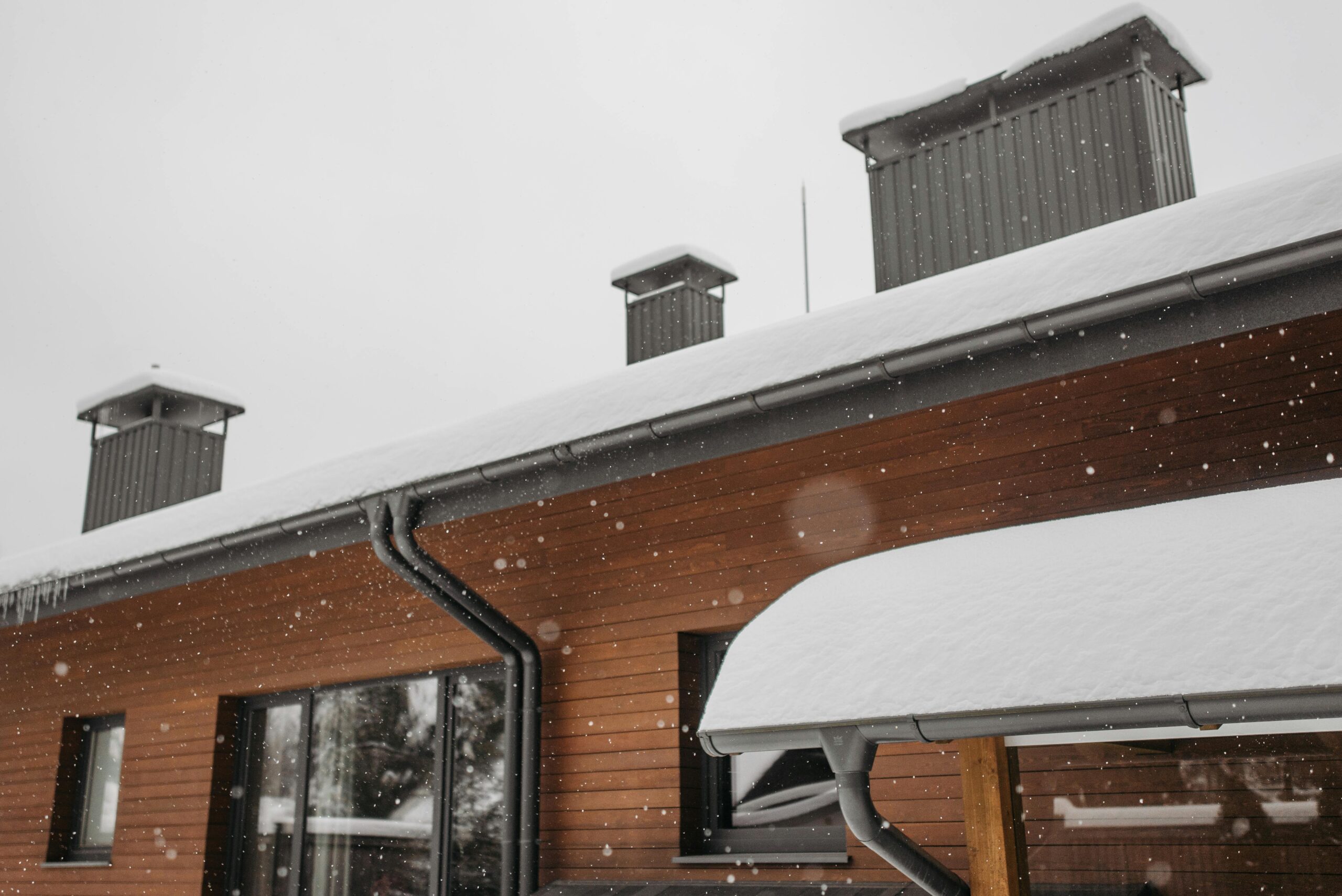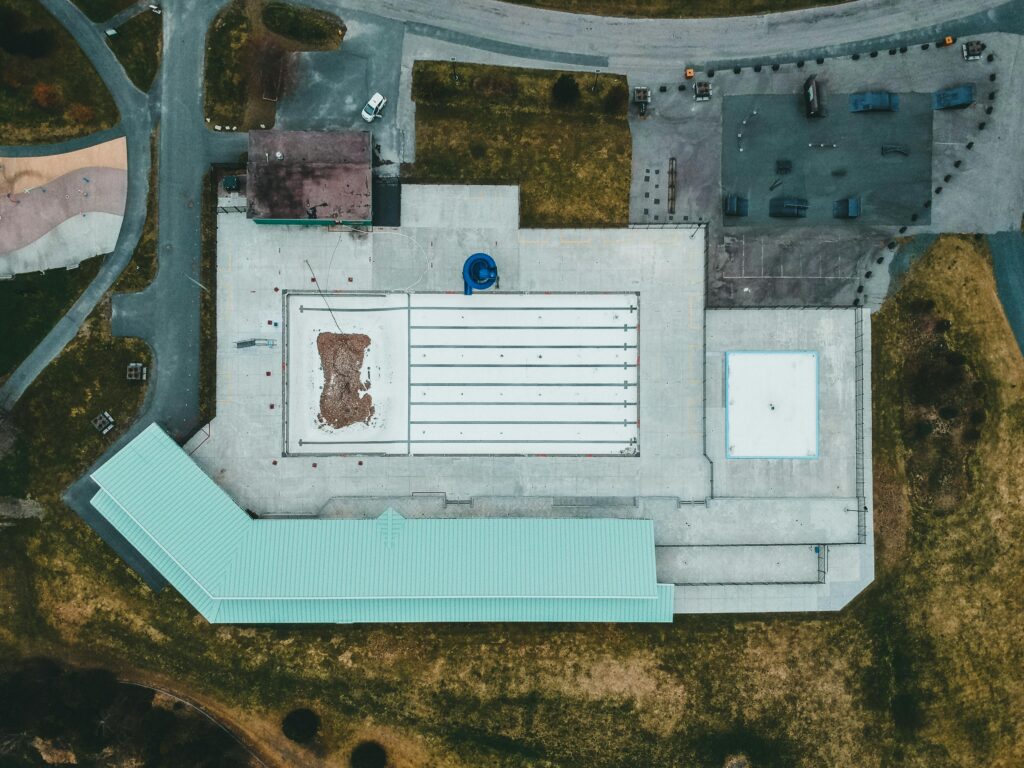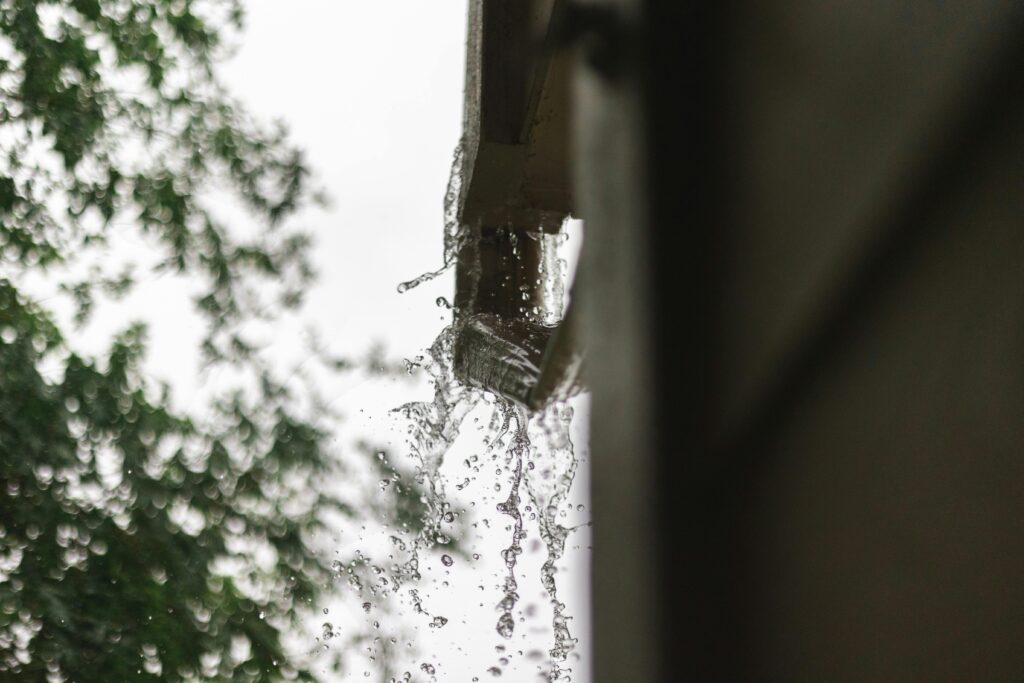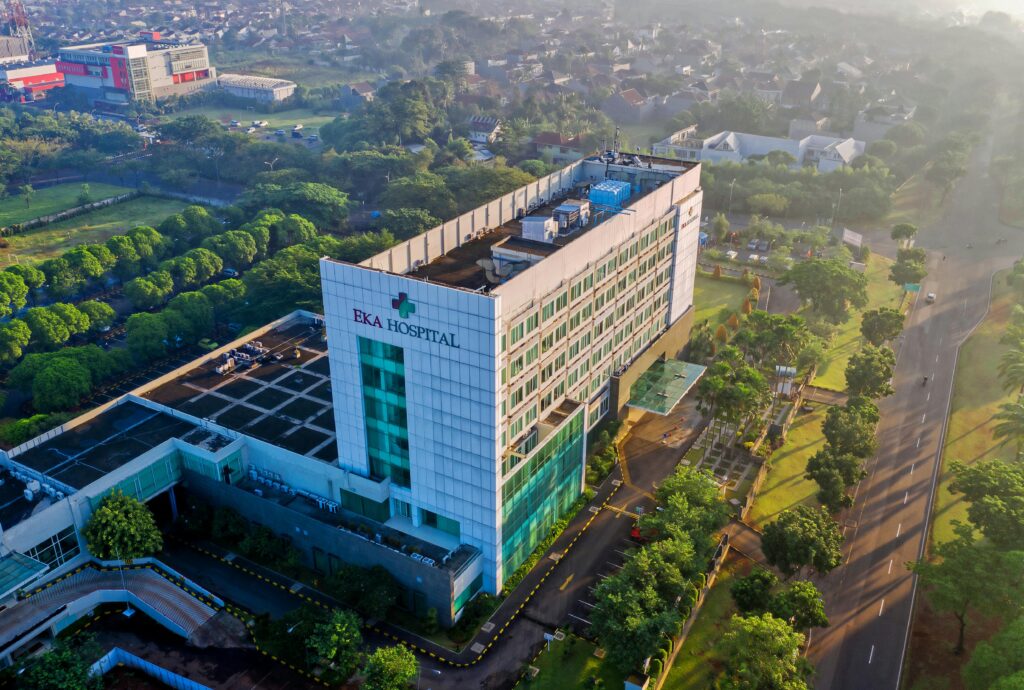Commercial roof drainage systems take careful planning and expert execution to protect your business from Mother Nature. Picture a once-dry lobby turned indoor pool because a proper drainage system was overlooked!
Read more as we explore the ins and outs of commercial roof drainage. Whether you’re a seasoned professional in the industry or just interested in understanding our built environment better, this guide will give you a better understanding of flat roof drainage and its importance.
Understanding the Importance of Commercial Roof Drainage Systems
If you own or manage a commercial building, proper roof drainage is key to preventing water damage. Commercial roof drains and drainage systems play an essential role in keeping your property safe from rainwater.
Poor commercial roof drainage can lead to standing water on the roof surface, increasing the weight capacity beyond what your roof is designed for. This scenario invites leaks, structural damage, and costly repairs.
The Role of Positive Drainage in Preventing Water Collection
Well-designed commercial flat roofs utilize positive drainage – a slight pitch that directs water towards drain points like scupper drains or interior drain pipes. This setup helps prevent any stagnant pools of water on your building’s rooftop after rainfall.
Keep in mind: Flat roofs need specialized systems to quickly remove rainwater away from buildings, and ideal drainage systems should dry out within 24-48 hours of a rain event.
To protect your investment effectively against nature’s elements and maintain the integrity of your roofing system, make sure good design meets regular maintenance.
Click to Tweet
Types of Commercial Roof Drainage Systems
When determining which type of commercial roof drainage system is best for your business, it’s crucial to understand the similarities and differences between two primary types – gravity and siphonic systems.
Gravity vs Siphonic Drainage Systems
The most classic drainage system is the gravity system. Like an apple falling from a tree, it relies on Mother Nature to move water through interior drains and downpipes. But don’t be fooled by its simplicity; these systems need careful design to prevent standing water on your commercial flat roofs.
Siphonic systems, however, are a bit more complicated. They use a baffle which creates lower atmospheric pressure inside than outside drain pipes. This allows water to get sucked in faster than gravity alone can manage.
Choosing between them? Consider this: for large surface areas where fast drainage is needed or weight capacity could be an issue, siphonic may edge ahead due to its speedier draining capability.
Click to Tweet
Components of a Commercial Roof Drainage System
A commercial roof drainage system is more than just gutters and downspouts. It’s an intricate network designed to keep your building safe from water damage.
The Role of Gutters and Downspouts in Drainage
Gutters collect water that lands on the roof, while downspouts carry this collected water away from the structure. Together, they form a frontline defense against rainwater buildup.
When properly installed, gutters funnel rainwater into downspouts which then direct it safely to the ground or drain pipe. This keeps standing water off your roof surface and helps prevent leaks inside your building. A professional roofing contractor can help with proper gutter installation.
Understanding Scuppers and Internal Drains
In addition to gutters and downspouts, scuppers play a crucial role in maintaining efficient drainage for flat roofs or low-slope roofs like those commonly found on commercial buildings. Scupper drains are openings along the edge of a roof allowing excess rainwater to exit directly off its side rather than flowing over onto walkways below.
Click to Tweet
Materials Used in Commercial Roof Drainage Systems
When it comes to commercial roof drainage systems, the materials used can make a big difference. These materials include cast iron, PVC, propylene, and ABS.
- Cast iron is popular due to its strength and durability. Modern cast iron coatings offer improved corrosion resistance, which extends their lifespan.
- PVC offers superior water resistance when compared to cast iron, but is not as strong and durable. It may be less costly and simpler to set up, making it an appealing option for many property owners.
- Propylene use isn’t as widespread because while it is lightweight and easy to work with, it lacks the longevity of more traditional roofing materials like cast iron or PVC.
- ABS (Acrylonitrile Butadiene Styrene) stands out for its ability to withstand low temperatures without becoming brittle or cracking – a key consideration in colder climates.
All these materials come with unique benefits; therefore, understanding your specific needs will help you choose wisely.
Click to Tweet
Regular Maintenance for Commercial Roof Drainage Systems
Maintaining commercial roof drainage systems is crucial to prevent overflow, which can lead to leaks and damage. Regular upkeep helps ensure the system functions properly.
Identifying Signs of Overflow
To keep your building safe from water damage, you need to stay vigilant about potential signs of overflow. These could include pooling or standing water on the roof surface or in gutters, damp spots inside your building near windows or doors, and even unusual smells due to stagnant water.
A regular maintenance schedule should involve a thorough inspection for these signs. It is also wise to clear debris from drains after storms as this can contribute significantly towards clogs that cause overflows.
Tips for Preventing Clogs
The best way to maintain efficient functioning of commercial roof drainage systems is by preventing clogs. Routine cleaning will help get rid of any accumulated dirt or debris that might obstruct smooth flow through drain pipes.
Additionally, consider installing screens over your drains as they’ll act as a barrier against larger pieces of debris while still allowing rainwater passage into interior drains. This strategy effectively prevents blockages and promotes better overall function within your drainage system.
Click to Tweet
FAQs in Relation to Commercial Roof Drainage
What methods are commonly used for roof drainage?
Commonly, gravity and siphonic systems, gutters, downspouts, scuppers, and internal drains are used in commercial roofing to manage rainwater.
What is the best drainage system for a roof?
The choice of a ‘best’ drain depends on factors like building design and climate. However, often positive draining using gravity or siphonic systems works well with flat roofs.
Where do you drain water from a roof?
Rainwater typically flows off through designed outlets such as gutters and downspouts which direct it safely away from the structure’s foundation.
Conclusion
Commercial roof drainage isn’t just a mundane aspect of building design. It’s the system that keeps your office dry, your structure safe and your business running smoothly. With this knowledge, you can ensure optimal function for your commercial roof drainage system in any weather condition. If you are in need of further guidance and installation, reach out to CDS Roofing today.



